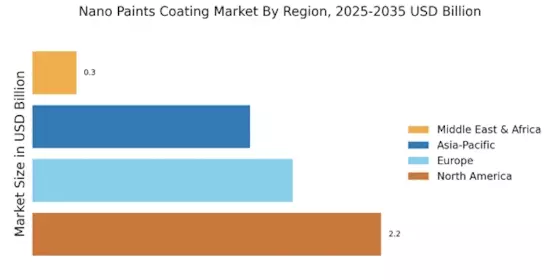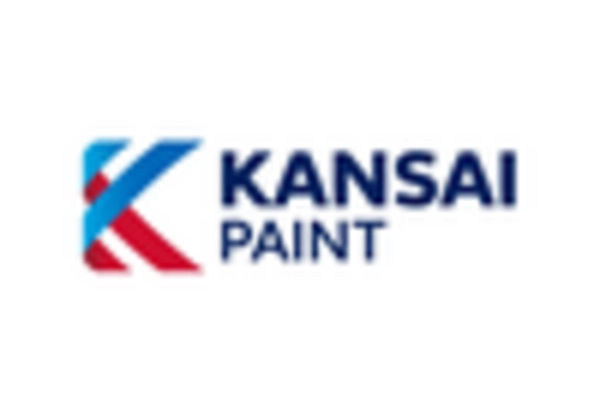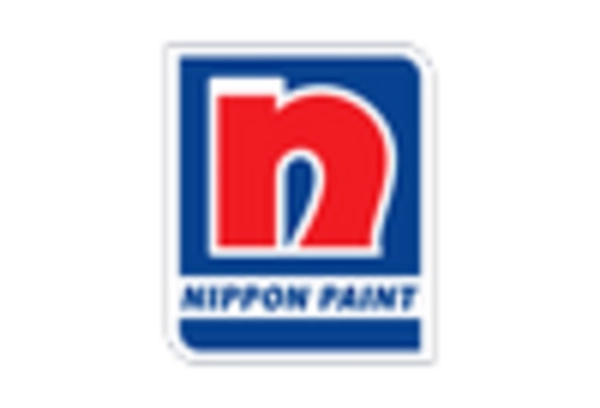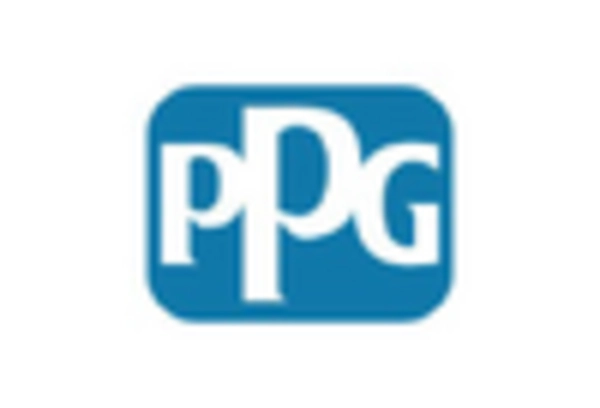Diverse Applications
The diverse applications of nano paints are a significant driver for the Nano Paints Coating Market. These coatings are increasingly utilized in sectors such as automotive, aerospace, electronics, and construction, owing to their unique properties. For example, in the automotive sector, nano paints provide enhanced protection against corrosion and UV damage, which is crucial for maintaining vehicle aesthetics and longevity. The construction industry benefits from nano coatings that offer improved thermal insulation and energy efficiency. As industries continue to explore innovative uses for nano paints, the market is expected to expand. The versatility of these coatings suggests a promising future, with potential applications in emerging fields such as renewable energy and biotechnology.
Sustainability Initiatives
The increasing emphasis on sustainability initiatives is a pivotal driver for the Nano Paints Coating Market. As environmental concerns gain traction, industries are seeking eco-friendly alternatives to traditional coatings. Nano paints, known for their reduced environmental impact, align with these sustainability goals. For instance, the market for eco-friendly coatings is projected to grow at a compound annual growth rate of 6.5% from 2023 to 2030. This shift towards sustainable practices not only enhances the appeal of nano paints but also encourages manufacturers to innovate further. The Nano Paints Coating Market is thus likely to witness a surge in demand as companies strive to meet regulatory requirements and consumer preferences for greener products.
Technological Advancements
Technological advancements play a crucial role in propelling the Nano Paints Coating Market forward. Innovations in nanotechnology have led to the development of coatings that offer superior performance characteristics, such as enhanced durability, scratch resistance, and self-cleaning properties. The integration of smart technologies, such as sensors and IoT capabilities, into nano coatings is also emerging, potentially revolutionizing their applications. According to recent estimates, the market for smart coatings is expected to reach USD 3.5 billion by 2026, indicating a robust growth trajectory. These advancements not only improve the functionality of nano paints but also expand their applicability across various sectors, including automotive, aerospace, and construction.
Consumer Awareness and Demand
Consumer awareness regarding the benefits of nano paints is steadily increasing, driving growth in the Nano Paints Coating Market. As consumers become more informed about the advantages of nano coatings, such as their longevity, reduced maintenance, and environmental benefits, demand is likely to rise. This heightened awareness is particularly evident in sectors like home improvement and automotive, where consumers are actively seeking high-performance products. Market Research Future indicates that the demand for high-quality coatings is expected to grow by 4.2% annually through 2028. This trend suggests that manufacturers in the Nano Paints Coating Market must adapt to changing consumer preferences to remain competitive.
Regulatory Support and Standards
Regulatory support and the establishment of standards are increasingly influencing the Nano Paints Coating Market. Governments worldwide are implementing regulations that promote the use of environmentally friendly coatings, which often include nano paints. These regulations not only encourage manufacturers to adopt sustainable practices but also provide a framework for quality assurance. For instance, the introduction of standards for low-VOC (volatile organic compounds) coatings is likely to boost the adoption of nano paints, which typically have lower emissions compared to traditional coatings. As regulatory bodies continue to emphasize sustainability and safety, the Nano Paints Coating Market is expected to benefit from increased compliance and market opportunities.


















Leave a Comment